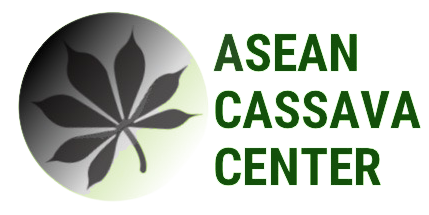Thailand: Cassava Cultivation Situation
.jpg)
Cassava cultivation
Thailand ranks third globally in cassava production, excelling in cassava processing and exports. Annually, Thailand produces 28-31 million tons of cassava across 8-9 million hectares, involving over 580,000 farming families and contributing 150 billion baht to the economy. About 75% of cassava roots are sourced locally, while 25% are imported. Cassava root usage predominantly centers on cassava starch production (66%), with over 70% of products being exported. Approximately 9-10 million tons of tapioca products, valued at 120 billion baht, are exported yearly. Domestically, 2.5 million tons worth 29 billion baht are consumed, with cassava starch being the most valuable (60-70% of total).
Main Challenges in Cassava Cultivation in Thailand:
Cassava cultivation in Thailand encounters various challenges, including labor shortages due to disinterest among the younger generation. Low productivity results from limited technology use, depending on natural conditions. Environmental factors, such as disease outbreaks, global warming, and natural disasters, affect cassava yield. Soil deterioration is another concern, caused by prolonged cultivation without proper maintenance.
Government Policies and Support:
The Thai government, along with private agencies, aims to increase cassava production to 5 tons per rai by 2024. Strategies involve improving cassava breeding, adopting best practices, preventing diseases and pests, and introducing farming technology. Supportive government policies encompass low-interest loans for farmers, including technologies like drip irrigation. Encouragement for digital applications such as iCassava and TSFM aids soil management and private businesses. Drones are utilized for plantation surveys and fertilizer spraying, while ongoing development of harvesting machinery is a joint effort between the government and private sectors.
Innovation and Modern Technology Application:
Various technologies are promoted in Thailand to advance cassava cultivation, including the adoption of drip irrigation for enhanced productivity. Intensive farming techniques are encouraged, along with large-scale management practices. Promoting farmer networking and technology transfer models is a priority, along with research and development in farm machinery. Utilizing digital technology and drones is advocated for improved farming practices. Proper zoning and land utilization management are also emphasized to optimize cassava cultivation outcomes.
Areas Needing Development or Improvement:
The most critical aspect requiring attention is the shortage of labor in the agricultural sector. Development and deployment of harvesting machinery, ongoing efforts led by the government and private sector, aim to address this challenge. Additionally, support for high-performing cassava varieties and ongoing breeding programs will further strengthen cassava cultivation in Thailand.
SWOT Analysis
Strengths:
- GMO-Free Certification: Thai cassava holds GMO-free certification, enhancing its appeal.
- Yield Improvement: Continuous breeding efforts produce high-yield cassava varieties.
- Stakeholder Collaboration: Over 50 years of collaboration drives industry evolution.
- Economic Significance: Cassava is a vital economic crop.
- Government Support: Support programs benefit cassava farmers.
Weaknesses:
- Income Instability: Farmers face income fluctuations.
- Low Productivity: The sector grapples with low productivity.
- Disease and Insect Vulnerability: Frequent outbreaks disrupt production.
- Natural Disaster Risk: Cassava is vulnerable to natural disasters.
- Labor Shortages: A shortage of labor hampers operations.
Opportunities:
- Advanced Breeding: Invest in breeding for high production, starch content, and disease resistance.
- Productivity Technologies: Adopt technologies like drip irrigation, farm management, knowledge sharing, R&D on machinery, digital tools, drones, and zoning.
Threats:
- International Regulations: Labor and chemical rules may impact exports.
- CMD Disease: Cassava Mosaic Disease poses a significant threat.
- Competitive Planting Areas: Increased competition in cassava regions.
- Regional Production Growth: Neighboring CLMV nations are expanding cassava production.
- Labor Shortages: Persistent labor scarcity.
- Climate Change: Global warming introduces uncertainties.
This analysis helps stakeholders understand internal strengths and weaknesses, along with external opportunities and threats in Thailand's cassava cultivation.
